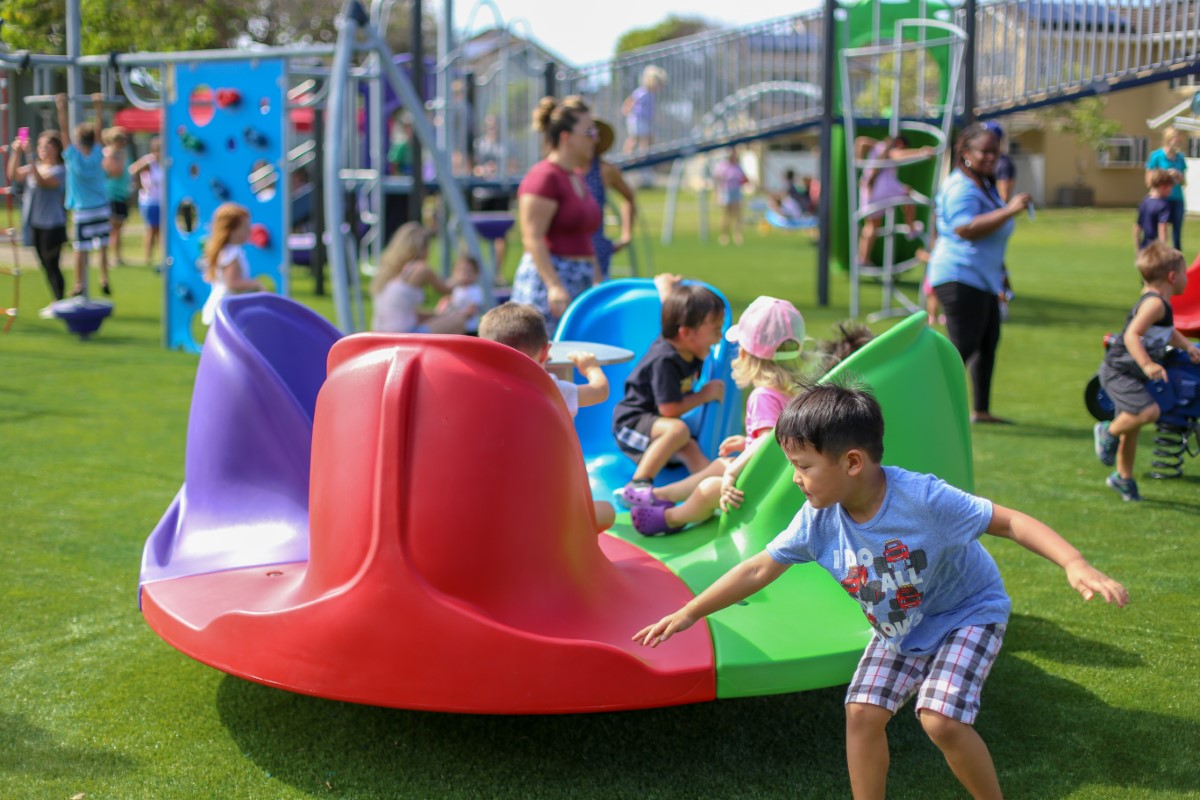Safety Makes Playgrounds More Fun!

Playgrounds throughout your community are great places for children and families to have fun. They are also places where injuries can occur if parents and children are not aware of a few simple safety guidelines. Home swing sets, trampolines and other backyard “playgrounds” pose similar hazards if safety precautions are not taken.
Staying Safe on Playgrounds
According to the Consumer Product Safety Commission, each year, more than 200,000 children ages 14 and younger go to U.S. hospital emergency departments with injuries associated with playground equipment. More than 20,000 of these children are treated for a traumatic brain injury, including concussion.
Avoid Strangulation Hazards
- The American Academy of Pediatrics cautions that children should not wear or play with anything that could get caught on equipment and become a strangulation hazard.
- Never attach or allow children to attach ropes, jump ropes, clotheslines or pet leashes to play equipment
- Leave sweatshirts with drawstrings and necklaces at home
- Remove bike helmets when playing on the playground
Be Cautious of Too Much Sun Exposure
-
Limit playtime at peak sun exposure time and familiarize yourself with the signs of heat illnesses.
- Apply sunscreen 30 minutes prior to allowing them to play outside and reapply every 2 hours.
-
Avoid burns; if playground equipment is hot to the touch, it is too hot for your child’s bare skin
Allow Only Age-Appropriate Activities
The Consumer Product Safety commission lists age-appropriate equipment in the Public Playground Safety Handbook. And remember, there is no substitute for parental supervision, especially for young children.
What Families Can Do To Prevent Injury:
- Properly supervise children (nearly half of all playground injuries are due to inadequate supervision)
- Always be sure your children are visible
- Before your children are allowed on the playground, look for any hazards, such as broken equipment, glass, pieces of metal or other items that could injure your child. If you see any broken equipment, call your maintenance service line immediately.
- Look for any possible tripping hazards or potholes where your children will be playing.
- Walk around the playground and look for anything that appears unsafe. If it looks unsafe to you, it likely is.
- Check out siganage for the playground to ensure children only play on the equipment deisgned for their ages.
- After you are satisfied that the playground is safe, let your children play!
Whether you are having fun at your community playgrounds or visiting other playgrounds and parks elsewhere, by being safe, you can help ensure your family finishes their play a bit more tired and as injury free as when they left your home.
For more information at playground safety, visit: